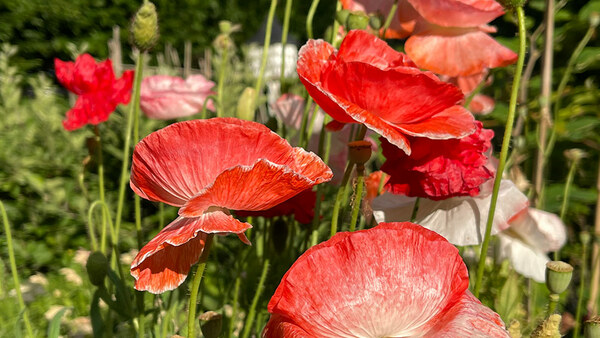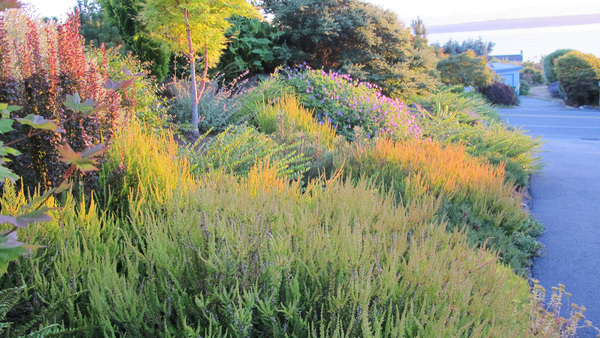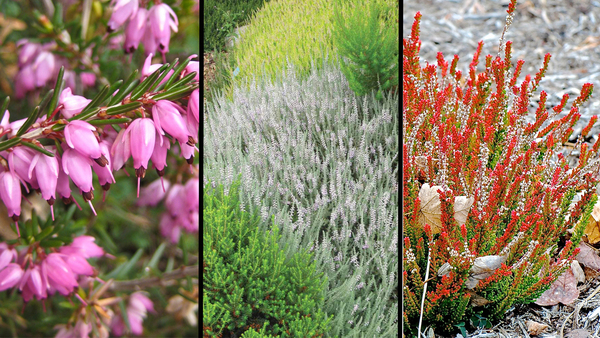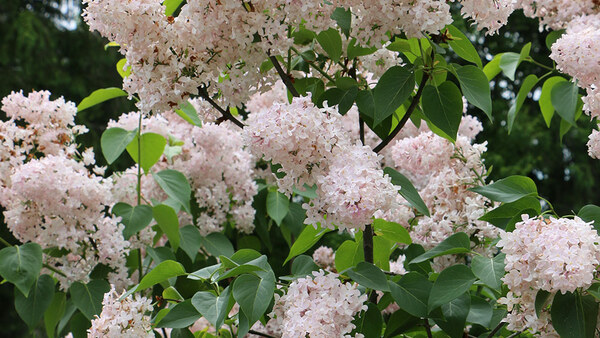
Winter heath (Erica carnea, Zones 5-8) is surprisingly absent from our Northeastern gardens. Species in the heath genus (Erica) are often confused or lumped in with heather (Calluna vulgaris, Zones 4-7). While heather cultivars can still be found at many garden centers and online nurseries, you may wish to avoid planting them. This species has been reported as invasive in the Northeast and parts of the Midwest. While it may not appear to spread around one’s garden, in wild areas, especially alpine, high-elevation, and coastal areas, heather has been documented as impacting the displacement of some native plants. Learn more about heaths and heathers.
|
|
|
Why to Grow Winter Heaths
Winter heath boasts evergreen foliage and winter flowers
Luckily, winter heath, which is perhaps even more beautiful than heather, provides dense, evergreen foliage. It has colorful winter blooms in shades of white, pink, and purple in what can otherwise be a dull gardening season for gardeners with cold winters. Since this species is hardy through USDA Zone 5, winter heaths are well-suited to most Northeastern gardens, providing year-round interest. This plant is a true winter-bloomer and can flower any time from December through April depending on variety.
Foliage provides its own winter interest
Always read the descriptions of each winter heath variety carefully to discover the foliage color, which can often change through the four seasons. Golden needles may turn bright chartreuse in spring and winter or be blushed with pink or red, while dark green needles might turn nearly violet once winter arrives. Many consider the flower color on winter heaths to be simply a nice bonus, as the real show comes from the many tints and textures presented by the foliage.
Because these leaves are so lovely, many gardeners plant winter heath in large drifts, often mixing varieties to create a patchwork carpet of color. In a few years, once plants grow and merge, the overall effect provides four-season beauty with little care beyond some annual trimming after bloom if you find the drying flowers unattractive. Learn more on how to care for winter heaths.
How to Grow Winter Heath
Easy to grow in most gardens, the secret to success with winter heath is pretty simple.
- Consider planting in larger drifts containing 6 to 12 plants spaced 12 to 18 inches apart so plants grow and merge together.
- Acidic, peat-rich soil conditions are a must (these are easy conditions to find in most Northeastern gardens).
- While this plant can survive a hot, dry summer, be sure to locate it in some afternoon shade for best results and be sure to provide adequate moisture in its early years.
- Established plants are very drought tolerant. Just be sure to water when dry only for the plant’s first year.
- Protection from harsh winter winds is essential as deep, protective snowfalls seem more and more unreliable given the changing climate.
- The safest bet would be to plant your winter heath with an eastern exposure against a wind barrier, such as taller evergreens.
Favorite Winter Heath Varieties
With over a hundred cultivars, there is no shortage of varieties to choose from. Some stellar selections include:

‘Golden Starlet’ winter heath
Erica carnea ‘Golden Starlet,’ Zones 5-8
The bright golden foliage that this variety sports in spring and summer turns to green with chartreuse tips in winter. Brilliant white winter flowers last nearly through spring.

‘Kramer’s Red’ Darley heath
Erica x darleyensis ‘Kramer’s Red,’ Zones 5-8
This hybrid cultivar offers brilliant pinkish-purple flowers in winter that first appear as chartreuse flower buds in autumn. Its dark green foliage gets stunning bronze tints in cold weather, becoming nearly maroon and enhancing the winter show.
|
|
‘Schneekuppe’ winter heath
Erica carnea ‘Schneekuppe,’ Zones 5-8
A German introduction, this winter heath has rich green foliage year round, which gets chartreuse tips in later winter and spring. The white flowers sparkle during the winter months, making the plant look as if it is frosted with bits of snow.
With colorful evergreen foliage that wows all year long and charming little flowers that bloom even in the dead of winter, winter heath is worth adding to your garden.
See more of our favorite heath varieties here.
For more on winter interest in the Northeast, check out:
- Plants That Peak in Winter in the Northeast
- Late-Winter and Early-Spring Bloomers for the Northeast
- 4 Uncommon Trees and Shrubs for Striking Late-Season Interest
And for more Northeast regional reports, click here.
Matt Mattus is the author of two books: Mastering the Art of Flower Gardening and Mastering the Art of Vegetable Gardening. He gardens in Worcester, Massachusetts.
Photos, unless otherwise noted: Matt Mattus






















Comments
Log in or create an account to post a comment.
Sign up Log in